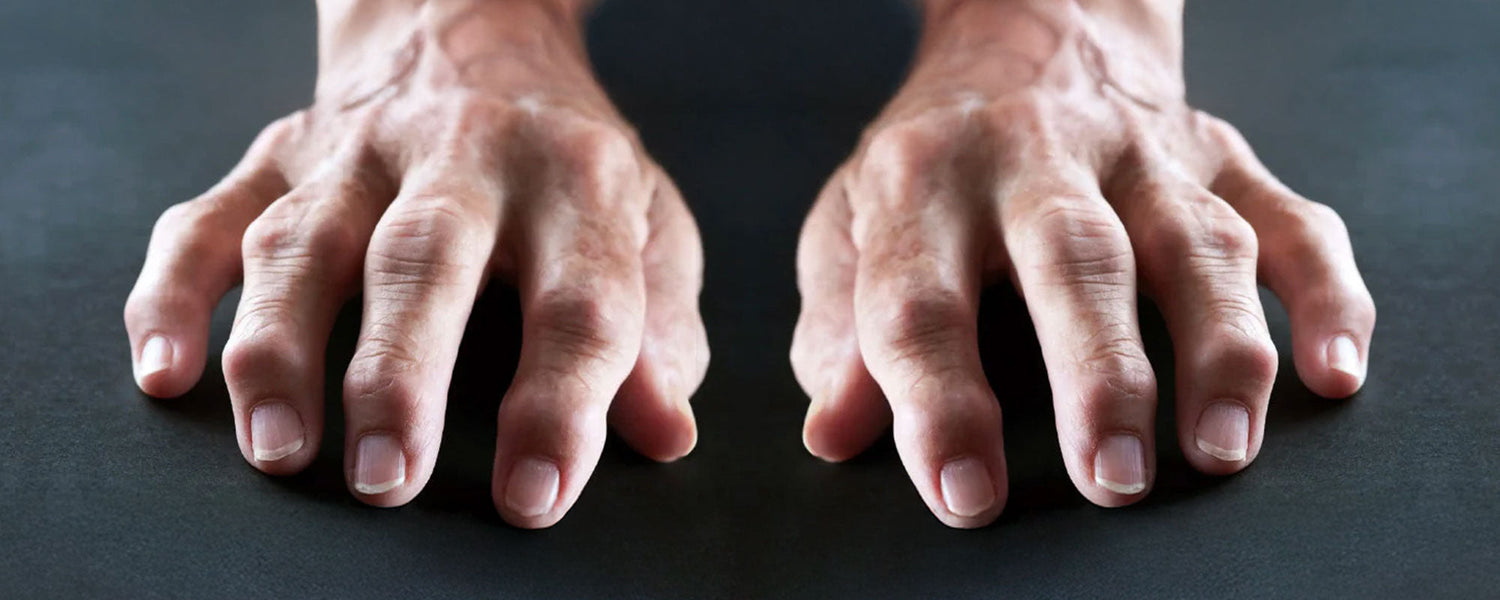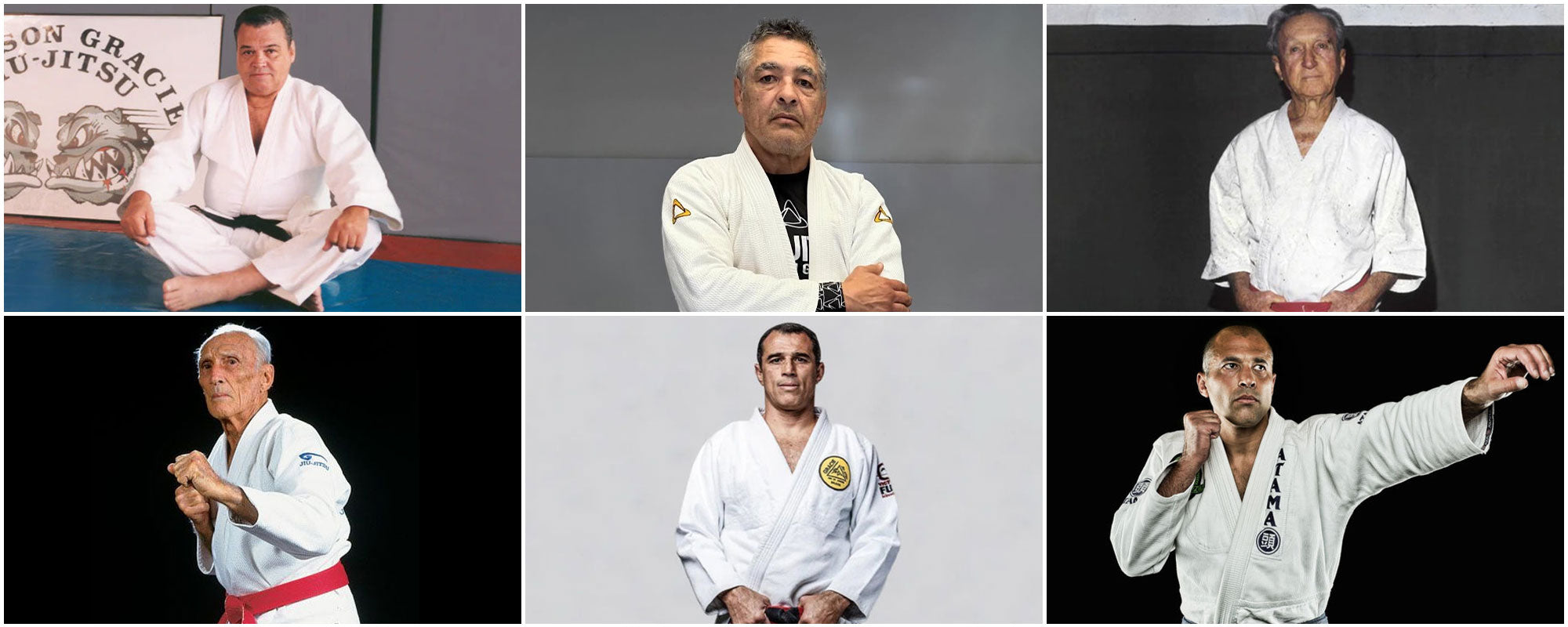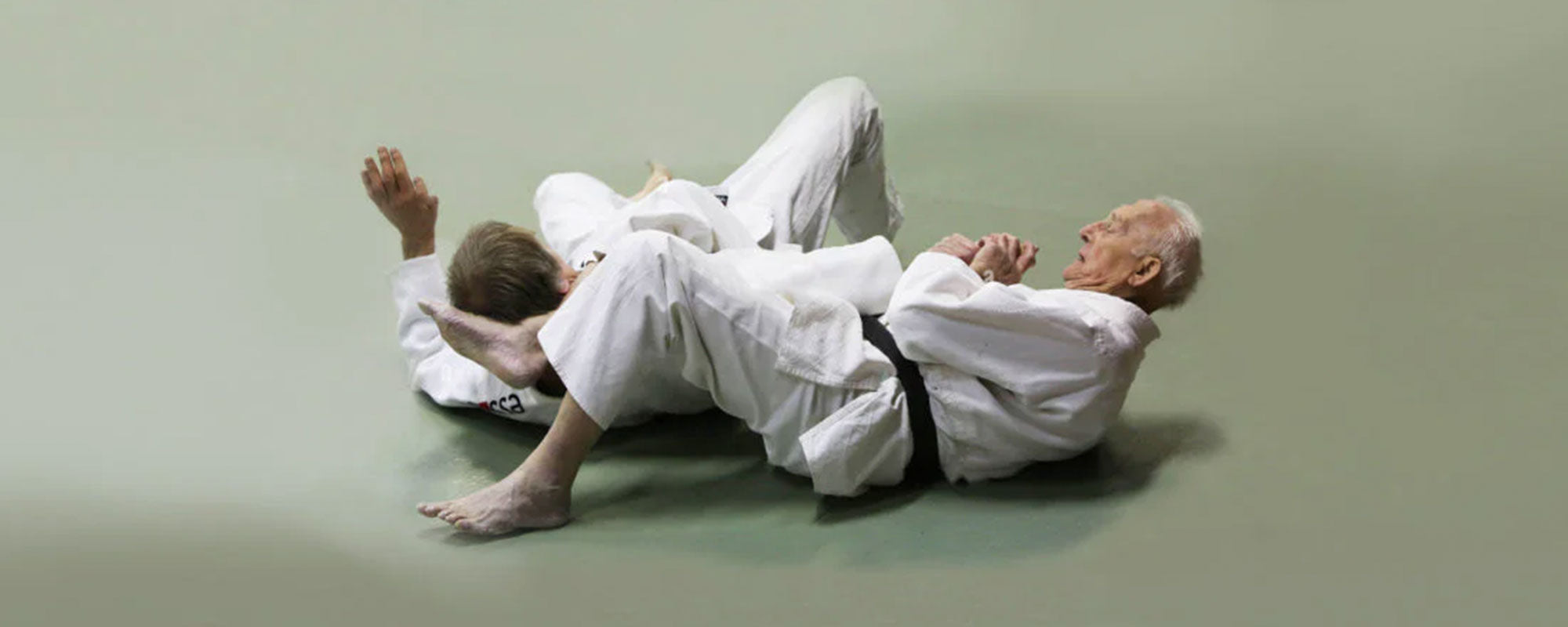Table of content
1. What is Arthritis
Most people confuse arthritis with osteoporosis and rheumatoid arthritis, while arthritis is a combined term that indicates several different problems in the joints. It is commonly known as inflammation of the joints. For this condition, joints become stiff and painful, mainly occurring in sports players as they practice tough training that puts strain on their joints. If ithey are not treated well, it can lead to chronic arthritis.
Worldwide more than 350 million people have arthritis.
Divisions of Arthritis:
There are basically two types of arthritis:
- Osteoarthritis - Also referred to as degenerative joint disease. The primary cause of this disease is a breakdown of cartilage. Breakdown of cartilage causes rubbing of the bones that can be very painful.
- Rheumatoid Arthritis - An autoimmune disorder that leads to chronic pain and inflammation. It can affect multiple joints.
2. How is BJJ Linked with Arthritis?
All sports involve exerting muscles and joints during training and practice. BJJ is one of the most popular martial arts that involves grappling, holding, pulling, throwing, and many other moves. But this also means there is more risk of joint injuries. When practiced for a long time, all of these moves initiate the breakdown of cartilage. If not prevented, it can lead to chronic osteoarthritis.
Some BJJ techniques are tough and require a lot of practice to master. You will have to deal with joints dislocating, damage to your fingers and toes, joint pains, and many other injuries while practicing. The most common move that increases the chance of injury is when athletes are grappling their opponents.
3. Causes of BJJ Arthritis
There are primarily two reasons that explain how BJJ can increase the risk of arthritis in athletes.
Grappling:
One of the important reasons BJJ arthritis occurs in the hands is due to grabbing the gi. These grappling techniques are more associated with while belts and are known as death grips’. These grips are called death grips because you have to hold your opponent gi with such strength that it can be dfficult to disengage.
For a brief moment, this type of grappling can be beneficial. You may win the fight, but sustaining your grip for extended periods will negatively affect the joints in your hands. Most beginners are observed to suffer less fom hand and joint pains as they are not experienced in performing grapples. Old BJJ practitioners predominantly suffer from joint pains as they have practiced and repeated grapples for a longer time. If you practice intense grips for a long time, eventually you will get arthritis.
Injuries:
Injuries are the other cause of arthritis in BJJ athletes. It includes all minor and significant injuries that are mostly caused by armbar, kimuras, americanas, and other techniques. For example, if your arm breaks and you do not rest properly during or after the fight, your arm joints won't correctly heal. Moreover, continuing your training with a broken arm, leading to severe chronic arthritis. Over time, you will start losing movement in your arm joints.
You may also suffer other bodily injuries. Your toes, legs, neck, back, elbows, and other parts are also at risk of being injured.
4. Fingers and Arthritis
As a jiu-jitsu athlete, you have to practice different BJJ techniques which almost every technique requires the use of your hands.
Cartilage is lined along the joints of every finger. It protects and reduces friction between your joints to encourage more mobility. Pain in the fingers occurs when the cartilage becomes inflamed. When you are gripping your opponent, you have to exert pressure that will cause friction.

4.1. Preventing BJJ Finger Pain:
If your fingers are damaged and you want to prevent chronic arthritis, there are preventive measures.
Use Grip-Free Guards:
Certain guard forms put a harsh degree of pressure on your fingers. You have to manage your different guard styles and rest your fingers. Two guards are more demanding on your fingers than others: the spider guard and the de la Riva guard. These require a lot of force and struggle whcih increases the risk of injuries to your hand.
You can use other guard forms like the butterfly guard, closed guard, or half guard these are better choices if your fingers are hurting.
Train without a Gi:
Grabbing a BJJ gi puts a lot of pressure on your fingers. Grapplers suffer from sore fingers due to gripping a gi, so one of the best solutions is to train against opponents without a gi until your fingers are healed. Most people think training with or without a gi makes no difference, however, this is not true.
No-gi helps you to learn important aspects of jiu-jitsu like timing, speed, sensitivity, etc. Marcelo Gracie is known for training half of the time in his gi and half of the time without a gi.
In short, always training or fighting without a gi is also not an ideal practice; try to maintain a balance between gi and no-gi training.
Tape your Fingers:
In BJJ, there are many techniques which have a high risk of injuries, so most practitioners use tape to protect the knuckles and/or fingers. The tape supports the jionts in your hands needed to fight. There are special tapes for athletes that are designed to easily fit around the fingers.
4.2. Recovery Tips for BJJ Hands:
If your hands are injured and you want to recover quickly, then there are specific tips and treatments that you can use to avoid chronic arthritis.
- Use Ice - This is the simplest way to reduce inflammation and pain in your hands. Apply ice packs to your fingers or put your hands in ice water. Make sure that you pull your hands out of the water a few times; otherwise, it could result in frostbite.
- Take Rest - Make sure to get an appropriate amount of rest and give your hands a break. If you think using specific techniques are hurting your hands, then use more comfortable movements.
- Warm-Ups - BJJ warm-ups are as simple as regular warm-ups. Daily warm-ups make your fingers stronger and healthier. It will take only 5-6 minutes to raise the mobility of your injured hands and joints.
- Hydrate Yourself - As a BJJ athlete, you train hard and sweat a lot. That’s why It's important to keep yourself hydrated. Try to drink a 20-24 oz bottle of water to restore any fluids you lost.
5. Healthy Eating For BJJ Arthritis
Your eating habits strongly influence arthritis prevention. Here are some healthier habits that you can adopt:
Intake of Anti-Inflammatory Foods:
In arthritis, anti-inflammatory foods act as a source of medication that reduce inflammation.
Studies show that anti-inflammatory foods have anthocyanin. It is present in fruits and vegetables that are purple and red.
Cherries - According to research by ncbi, cherries have shown a positive effect in reducing oxidative stress, inflammation, and healing muscle damage.
Another study conducted by D A J Connolly And his partners in 2006 showed that drinking cherry juice before and after exercising lowers your average loss of stamina to 4% instead of the expected 22% loss of energy during a fight or training.
Ginger - This food product has anti-inflammatory properties. It works by reducing the production of chemicals that increase inflammation. According to Dutch doctors, ginger intake slowly reduces joint pain.
Lower Intake of Sugar:
Reduce your intake of sugary foods as they increase the concentration of AGEs (advanced glycation end products). AGEs are toxins that are responsible for inducing inflammation. Avoid all candies, sodas, and processed foods.
Don't Overcook Food:
In 2009, a study found that food that is overcooked at a high temperature increases the number of AGEs toxins.
Dairy Intake:
According to the Physicians Committee for Responsible Medicine, the protein in dairy products irritates tissues at the joints. BJJ athletes with arthritis are mostly recommended to fulfill their protein requirements from meat and other vegetables.
Avoid Smoking:
BJJ athletes are not allowed to smoke due to damage to the lungs increasing the risk of arthritis.
Salt and Food Preservatives:
Avoid food preservatives as they contain many harmful chemicals and consume moderate amounts of salt in your diet as it causes inflammation in your joints.
6. Supplements for the BJJ Arthritis
Supplements are used to deal with any nutritional deficiencies. There are supplements for BJJ athletes who have arthritis. These supplements are:
Glucosamine:
Glucosamine is one of the most used supplements for inflammation in the joints. Our body produces glucosamine that is then used to make glycosaminoglycans. These substances are responsible for creating the cartilage in our joints. Thus, supplying your body with extra l glycosaminoglycans will reduce joint pain and swelling. It is mainly recommended you take 1500 mg daily.
A study that was conducted in 2010, “Annals of the Rheumatic Diseases,” explains that glucosamine has a significant effect on reducing pain in your knee joints.
Chondroitin Sulfate:
These are glycosaminoglycans involved in joint cartilage formation and help reduce the pressure on your joints. It is recommended you consume with glucosamine at a recommended amount of 1000 mg per day.
According to one study, 800 to 1200 mg is considered a safe amount for arthritis pain.
Methylsulfonylmethane:
Methylsulfonylmethane's effectiveness on arthritis is not as obvious. However, a study conducted in November 2008 that showed that this substance helped relieve joint pain.
Omega-3:
Omega-3 has the potential to reduce inflammation and joint pain. You can find it in fish oils. According to the guidelines issued by the Royal Australian College of General Practitioners, doctors should always recommend that arthritis patients use omega-three supplements. The recommended amount that should be consumed is 12 g of omega-3 daily.
Vitamin C:
Vitamin C is one of the vitamins responsible for the production of collagen. A deficiency in vitamin C strongly affects our muscles and joints. Luckily, supplements are readily available and you can consume them from citrus fruits.
7. Conclusion
There is no gain without pain. If you want to become an expert at BJJ,, you will have to endure some injuries and pain. The ideal way to prevent injuries is to prepare your body and mind for difficult situations. You can reduce the risk of arthritis by improving your diet, taking supplements, and using preventive measures. If you are fighting arthritis, then start using these preventive measures today.












Leave a comment
This site is protected by hCaptcha and the hCaptcha Privacy Policy and Terms of Service apply.